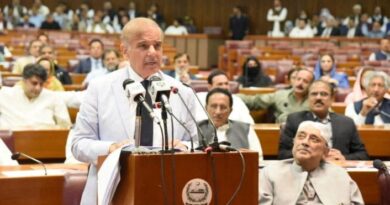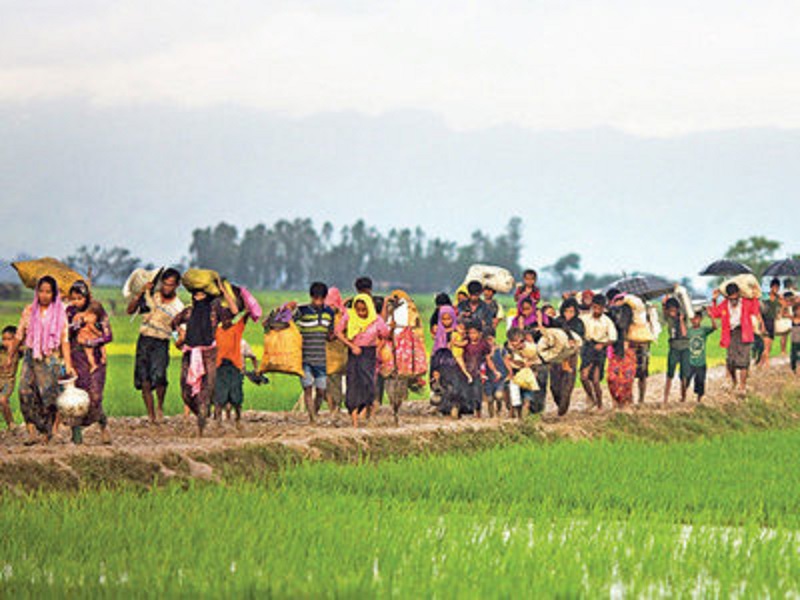Our Universities are the institutions of change!
…Like, Share, Follow, Subscribe, do something be the part of Free Press
By Nazarul Islam, 10 jnuary 2020, TIO: Historically, students have played valiant roles in their nation’s watershed moments—political movements, calamities, wars or liberation struggles. Bangladesh and India may be quoted as two excellent examples of nations that rose up to the occasion. To immerse into shining examples, we need to look back at the role of students in India’s freedom struggle. When Viceroy Lord Curzon partitioned Bengal in 1905 for the first time, shocked Indian students had gathered together in large numbers, to reinforce Their nation’s freedom movement.

We also need to take time and have a look at the independence movement in Tunisia, during French colonial rule—from a perspective, largely neglected by scholars: the voice of the students who were major participants. The experience of Tunisia’s students lends to a better comprehension of the relationship between Western education, and the inception and development of a nationalist movement.
Student activism or campus activism—both types have included efforts made by students to cause political, environmental, economic, or social change. Although often focused on schools, curriculum, and educational funding, student groups have influenced greater political events.

My days of passion and youth had followed the sharp turns of history, post-1970, to lure me and hear what DU student leaders had voiced, under grave turbulence. Tofail Ahmed and Shahjahan Siraj had impressed me the most, as future leaders and harbingers of a new revolution, taking shape in Dhaka.
Also, Read: Begu Sarai to Delhi: A blessed Indian’s journey!
Youths had mainly been behind the Indian National Congress, during India’s March for freedom. When the Congress was split in its Lahore Session in 1907, the students also got distributed between groups. They rallied around the leadership of Bal Gangadhar Tilak and later on, of Mahatma Gandhi.
Under the leadership and guidance of Gandhiji, the students had become a formidable force in India. When Gandhiji launched his campaign against the Rowlatt Act, 1919, and the Jallianwalla Bagh atrocities, students participated in huge numbers.
Gandhiji had called upon the students to withdraw from schools and colleges and students from all over the country responded promptly and boycotted schools and colleges. For the first time, student force was organized and mobilized against the British rule. Again, in the year 1920, the First All-India Students’ Conference was held in Nagpur under the Presidentship of Lala Lajpat Rai. Students could now get the support and guidance of leaders like Subhas Chandra Bose and others.

Students had also played a vital role in various campaigns launched by Gandhiji against the British such as — the ‘No Tax’ Campaign 1921, the Civil Disobedience Movement, the Dandi Satyagraha of 1930, etc.
India’s focused students have not hesitated to participate in movements such as — removal of untouchability and casteism, adult education, popularizing ‘Swadeshi’ articles and the use of ‘Khadi’, cleaning of the villages, promotion of communal harmony, and so on. In 1936, The All-India Students’ Federation, the first student organization of India, was born in order to support the Indian National Congress in its struggles.
All India Students’ Federation was divided into two factions (in 1938) such as – the All-Indian Youth Congress and All-India Students’ Federation (AISF).
Students of the bygone era had an active role in the ‘Quit India’ movement, launched by the Indian National Congress under the leadership of Gandhiji. It was then almost the climax of the youth movement. They boycotted schools and colleges in large numbers. They organized mass processions and rallies in the towns and cities all over the country.
A few sections of students took to some violent actions, to paralyze the British administration by cutting telephone wires, blocking transport routes, destroying public property, disturbing postal, police, banking, and other services. Thereby, they brought the government machinery to a standstill.
Several students were imprisoned and faced physical harassment and many of them were killed as a result of police firings.

According to Professor Dr. Imtiaz Ahmed, Director, Centre for Genocide Studies (CGS), Dhaka University: ‘Targeting a university and killing its students and teachers is unprecedented in the history of human conflict. It’s a textbook example of genocide. Pakistan army tried to erase Bengali nationhood by annihilating Dhaka University and its teachers and students, as Dhaka University is the birthplace of Bangladesh’s struggle for emancipation.’
After nearly nine months of the atrocious war, the Pakistan army surrendered to the allied force (Bangladesh and Indian joint command) and Bangladesh was born. The instrument of surrender was signed in Suhrawardi Udyan (the then Ramna Race Course) located inside Dhaka University premises.
India’s Lieutenant General J F R Jacob (then Major General) wrote in his book, titled Surrender at Dacca: Birth of a Nation: ‘When he (Lieutenant General A A K Niazi) agreed to surrender, he wanted the ceremony to take place inside the cantonment. We wanted it at the Race Course where the nation’s father, had given his revered March 7 (1971) speech, nine months and nine days, earlier.’
There are hundreds of places in Dhaka University which have immense significance for their connection with Bangladesh’s history. In fact, the entire university campus can be considered as a museum of the liberation war of 1971’.
This was the argument presented by Professor Dr. Imtiaz Ahmed. However, the unfortunate truth is very few students of Dhaka University even know about the sacrifice of their institution’s teachers and students during the Liberation War of 1971.
In our contemporary times, if certain defining moments and images were needed to be picked out to thread together the saga of the protests on India’s campuses, streets, and specific ‘localities or mohallas’, these would likely include the state of Assam’s detention camps— whose inmates stare out of eyes that resemble hollowed out caverns, the girls of Jamia Millia Islamia University, Delhi who braved police blows to shield a male student from being brutally manhandled. The women and children of Delhi’s Shaheen Bagh who reportedly sat, there had put 24×7 in the open, unmindful of the toll a cruel winter can extract physically and the danger of an ambush, and of Aishe Ghosh, the president of the Jawaharlal Nehru University (JNU) students’ union, head swathed in a bandage and resolve, unbroken.

Protests and demonstrations have shown no sign of tapering off, in Delhi, where the central issue that sparked them off— was the Centre’s Citizenship Amendment Act (CAA). Together with the National Register of Citizens (NRC) and National Population Register (NPR), the CAA makes for a package that throws the onus on Muslims to ‘prove’ their ‘bona fides’ as Indian citizens. No matter what the government/Bharatiya Janata Party’s (BJP) ex-post-facto explanations/justifications might contend, the CAA and the instrumentalities to execute this are dangerous, divisive and communal.

The agitation originated in Assam whose demography is distinct but as it had spread across the country, it was clear that Muslims, who feared they would be disenfranchised and reduced to being second-class citizens, picked up the baton as sections of civil society and rights’ activists shored up the protests.
Interestingly, barring the Left and fringe Dalit groups, not a single ‘mainstream’ party came out in support, except to tweet. Their inability showed the extent to which the polity has got polarised since 2014, so polarised that the non-BJP spectrum, barring parties like the All India Majlis-e-Ittehadul Muslimeen (AIMIM) and Assam’s All India United Democratic Front (AIUDF), looked over its shoulders before speaking its mind out. The AIMIM and AIUDF make no bones that they stand for minorities’ rights and interests.
Also, Read: India’s rising surge of ‘Hindu’ nationalism!

If the CAA was the political underpinning, as the protests coursed through, other issues coalesced with it to enlarge the context and transform into a broader rally against the Centre’s obvious endeavor to first target the minorities (lynching, cattle vigilantism, the Act to end triple ‘talaq’ and the abrogation of Article 370 was the other modalities) and then the larger constituency of ‘ideological’ dissenters.
In victimizing the latter segment, the labels, “tukde, tukde gang” and “urban Naxals”, were useful in imagining and imaging adversaries who were “anti-national” and “secessionist” and, therefore, enemies of the state. Hence, the JNU, that has a history of challenging any establishment and is remarkably diverse, economically, socially and politically, was ground zero.
As long as the state’s repression and brutalities were directed against Jamia, the Aligarh Muslim University (AMU) and Lucknow’s Nadwa College and the Integral University (a private varsity run by a Muslim trust), the Centre and the BJP managed to cope with and even cash in on the fall-out.
Also, Read: Humble beginnings foster bigger changes

Unfortunately, these institutions were also portrayed as the ‘hotbeds of separatism and jihadism’—although Jamia and AMU have a considerable number of non-Muslim students co-existing peacefully with the others. In Uttar Pradesh, the police crackdown on Muslims was applauded by many Hindus who felt the ‘insurrectionists had to be shown their places’
If the protests – spearheaded largely by Muslims in response to police suppression, and abetted by local BJP leaders and workers, with a nod from the government’s brass – did not trigger conflicts with Hindus, it was primarily because many Hindus believed that the cops did the job for them.
However, in piling in on JNU, the Centre/BJP might have erred tactically. The alibi of pulverizing the ‘urban Naxals’, has not found a larger currency. JNU is not an island in the national capital, unlike some of the colleges on the Delhi University campus. It draws students subscribing to disparate ideologies (that explains why the RSS’ student wing, the Akhil Bharatiya Vidyarthi Parishad or ABVP secured a toehold) like the students’ organizations representing the Bahujan Samaj from the country over, especially from states like Uttar Pradesh, Bihar, Odisha and the North-East that have less-than-par educational resources.
Also, Read: RSS backed BJP Govt. builds its First Detention Camp for illegals, some workers fear detention there
The fee structures and facilities have made JNU amenable to the less well off. The students are always game for a debate on the day’s topics and most of them are intensely political till they live on the campus.
Privately, some BJP leaders have expressed regret over the assault, calling it simply ‘unwarranted’. They admitted that the student unions in JNU have an enormous capacity to mobilize dissenters and that could show up in the upcoming Delhi Assembly elections. Admitting that the ABVP’s role in the violence could not be denied, they have censured the outfit for resorting to ‘extra-constitutional means to register its presence on JNU.
I have every reason to believe that the JNU in Delhi will present itself as a glorifying example an institution that restored back India’s pride in its values of secularism and faith in the journey ahead.
We are proud of this institution, that has committed itself to positive ‘change’!
Also, Read: India is Entering a New Dark Age




